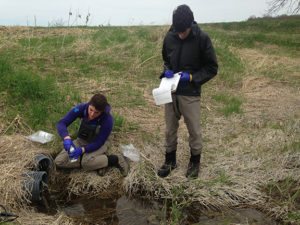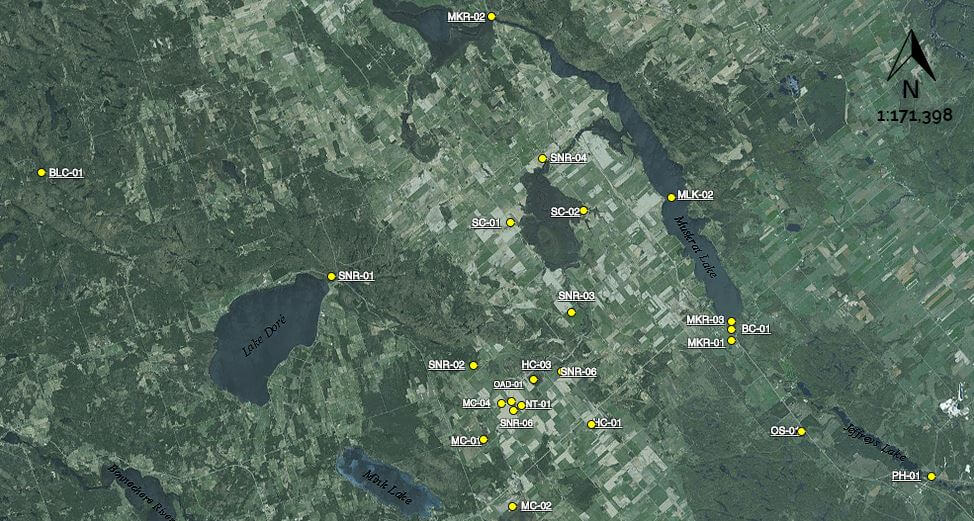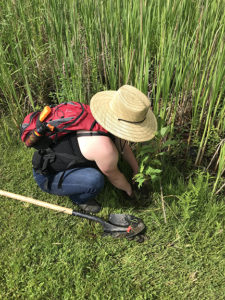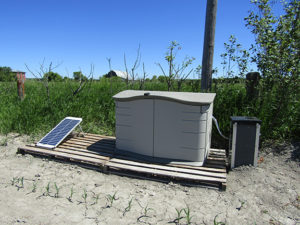Muskrat Lake Watershed Water Quality Monitoring Network
In 2014, a comprehensive effort was made to assess water quality issues in the Muskrat Lake watershed in relation to land use activities by developing a long-term water quality monitoring plan for the Muskrat Lake watershed.

A 24-site water quality sampling network spanning three townships was developed in a coordinated effort between key stakeholders. The water sample collection program is now entering its 6th year with monitoring conducted by Environmental Technician summer co-op students from Algonquin College in Pembroke through the Office of Applied Research and Innovation.
A partnership with the Ontario Ministry of Environment, Conservation and Parks (OMECP) ensures monthly in-kind analysis of the samples. By collecting data on water quality, we are gathering important information on the current state of the watershed. This can influence decision-making at different levels of government, inform local organizations, and empower citizens. Ultimately, data collected over a longer period (8-10 years) can help to reveal potential cumulative effects and target key areas to focus remediation and education efforts.
After water is collected (sampled), the samples are shipped to OMECP to be analyzed at their accredited lab.

This map illustrates the Muskrat Lake watershed sampling network. By clicking on a sample site number, you will be redirected to the Muskrat Watershed Council website where you can click on a site number to read the site data.

Agricultural BMPs in the Muskrat Lake Watershed
Over the years, the data collected from the water quality monitoring network enabled the Office of Applied Research to leverage additional funds to implement certain agricultural best management practice (BMP) projects in the watershed. This stems from recommendations by Dr. Rebecca L. Dalton in the Muskrat Lake Watershed Quality Report. The two major implementations include:
- Installing and Monitoring Controlled Tile Drainage
- Streambank Restoration
For information on the streambank restoration project, please visit The Natural Edge – Agricultural Streambank Restoration.
Controlled Tile Drainage

In summer and fall 2016, Algonquin College’s Office of Applied Research in Pembroke was awarded a 2-year grant from the Ontario Ministry of Food, Agriculture and Rural Affairs (OMAFRA) through the Best Management Practices Verification and Demonstration Fund to implement controlled tile drainage (CTD) demonstration sites in the Muskrat Lake watershed. The Muskrat Watershed Council (MWC) also received funding from OMECP through the Great Lakes Guardian Community Fund to support CTD installations. Together, the MWC and Algonquin College installed a total of 5 CTD structures on 3 farm properties. These CTD sites were selected because they are adjacent to areas where water quality is of concern.
Agriculture and Agri-Food Canada provided support throughout pre- and post-installation, including loaning the college two automated samplers to test water directly from the structures during rain events. These, along with a weather station, which measured temperature, wind speed, rain, and soil moisture, allowed us to collect information on the effectiveness of the CTDs. Real-time data loggers were also installed inside each CTD structure to collect information on flow and discharge rates. It was our hope that if proven effective in our region, as well as other regions, more farmers may choose to adopt the technology over time.
Agri-Can has been testing the effectiveness of CTD structures for holding back water in the field and decreasing the amount of nutrients at end-of-pipe for over 10-years in South Nation, near Ottawa. They’ve also researched the link between CTD and crop yield increases. For more information about Controlled Tile Drainage, click here to read an article written by two of our project partners, Dr. David Lapen and Mark Sunohara of Agriculture and Agri-Food Canada. Also, check out the video below.